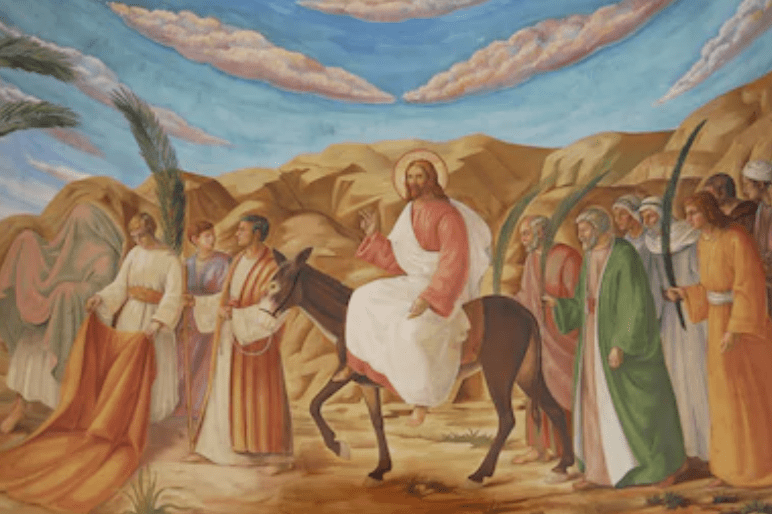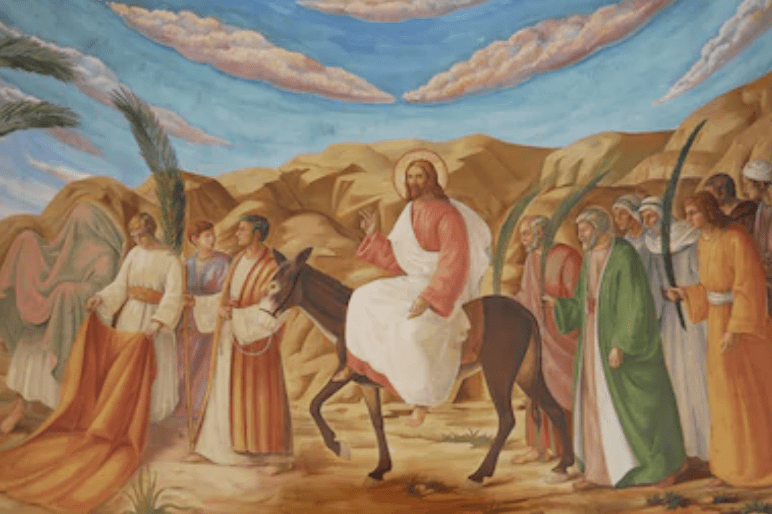
Palm Sunday

What is the Day??
“Say to Daughter Zion, ‘See, your king comes to you, gentle and riding on a donkey, and on a colt, the foal of a donkey.’”
Matthew 21:5
Palm Sunday is the Sunday before Easter celebrating Jesus’ triumphant arrival in to Jerusalem mentioned in gospels (Mathew 21:1-11, Mark 11:1-11a, Luke 19:29-40). The observance of Palm Sunday in Jerusalem was witnessed by the pilgrim Egeria in about 381-384. During this observance there was a procession of people down the Mount of Olives into Jerusalem. The people waved branches off palms or olive trees as they walked. Shouting the antiphon, “Blessed is he who comes in the name of the Lord!” The Palm Sunday observance was generally accepted throughout the church by the twelfth century. In the 1979 BCP on page 270 the day is known as “Sunday of the Pashion: Palm Sunday”, services for this Sunday start with blessings of palms followed by a procession into the church.
Some symbolisms observed from the gospels include Jesus riding on a donkey not a horse which can be seen to signify an animal of pace and not of war, others include the use of Palm branches as a symbol of victory, triumph, peace and eternal life.
What Does it Mark?
When Jesus entered Jerusalem, the whole city was stirred and asked, “Who is this?” 11 The crowds answered, “This is Jesus, the prophet from Nazareth in Galilee.”
Matthew 21:10-11
Palm Sunday marks the start of Holy Week. Palm Sunday is meant to be both happy and sad dad, singing praises for Jesus but sad knowing his death within a week by the same people singling praise.
Did You Know?
The palms used during a Palm Sunday service are saved to be burnt for use during the following year’s Ash Wednesday.
